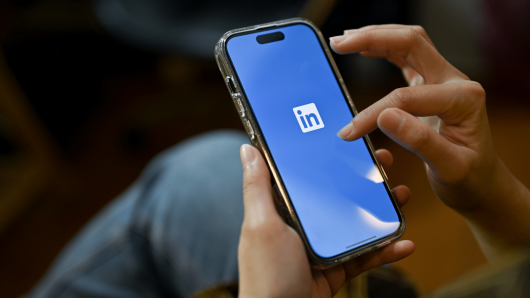LinkedIn has some of the most sophisticated B2B targeting available in today’s digital advertising landscape. With the world’s largest professional audience, running ads on this platform is a no-brainer for many B2B advertisers. Some of the best strategies on LinkedIn for B2B companies revolve around the sharing of content.
The ad experience in these situations has typically meant you either send people to your website for gated content, or you have them fill out an on-platform lead form with a link to website content. LinkedIn’s new document ads have made the process of sharing content even easier.
What Are Document Ads & How Do You Use Them?
LinkedIn document ads are a form of sponsored content that allows members to read and download documents directly in their newsfeeds. This could include whitepapers, e-books, case studies, infographics, slides, and more. These ads are designed to help businesses capture leads from interested audiences by gating your content with a LinkedIn Lead Gen Form.
Unlike other sponsored content ad formats, document ads require you to upload a file in PDF, DOC, DOCX, PPT, or PPTX format. There are additional specifications on aspect ratio, page limits, and file size, as well.
To create a LinkedIn document ad, you will first need to create a sponsored content campaign. Currently, document ads are supported with brand awareness, engagement, and lead generation objectives. From there, you set your target, bid, and budget. Then, upload your document, and build your ad.
Tips for a Successful LinkedIn Document Ad Campaign
- Identify your target audience: LinkedIn allows you to target your ads based on various demographic, geographic, and firmographic criteria, such as job title, company size, and industry. Make sure you have a clear understanding of your target audience before launching your ad campaign.
- Create compelling content: Your document should be well-designed, informative, and engaging. It should offer value to your target audience and provide them with new insights or solutions to their challenges.
- Optimize your cover image: Your cover image is the first thing users will see, so it needs to be eye-catching and relevant to your document’s content. Use high-quality images, and design a cover that is both aesthetically pleasing and informative.
- Use a clear call-to-action: Encourage users to take action by including a clear and compelling call-to-action in your document and cover image. This could be a simple “Download Now” or “Learn More” button.
How Can You Measure the Performance of LinkedIn Document Ads?
One of the biggest benefits of document ads over standard lead gen ads is in the measurement. Now that your campaign is launched and you’re starting to generate leads, you can actually measure the impact of your document ads by understanding member interest and engagement with your document. In the interface, you can track what percentage of your document was displayed (25%, 50%, 75%) and see the total number of downloads. You can even learn how many members not directly in your target audience completed your document, giving you an idea of the viral engagements your ads are producing.
Since LinkedIn document ads are an extension of sponsored content, you can also view clicks to the landing page, engagement rates, lead form opens, and other standard reporting you are already used to seeing with previous sponsored content ads.
While LinkedIn document ads are quite new, and we only have early testing data, we’ve definitely seen early adopters of this ad format find success. The ease of access and improved measurement make this an ideal ad format to test for almost any B2B advertiser.








